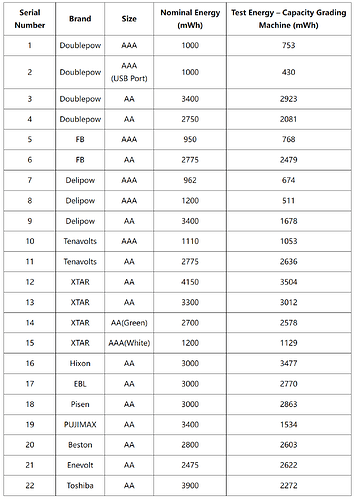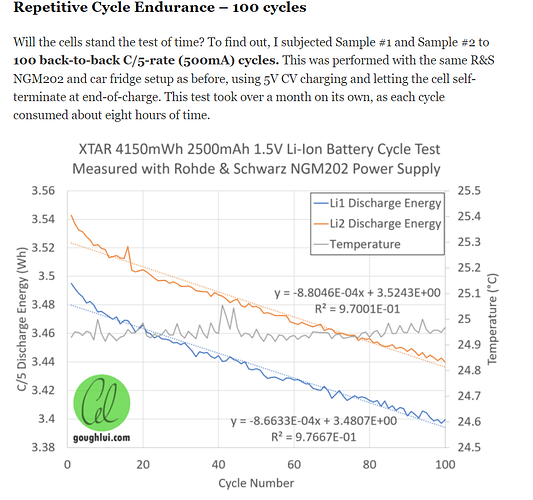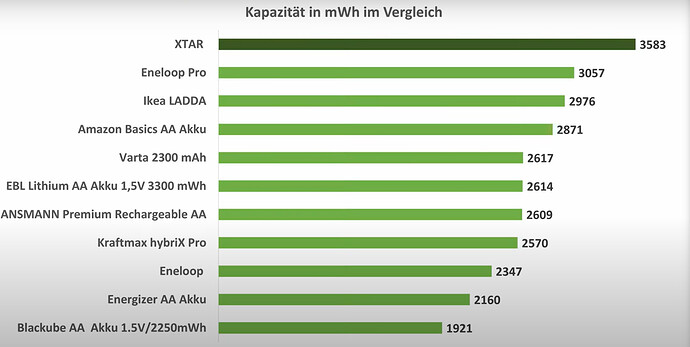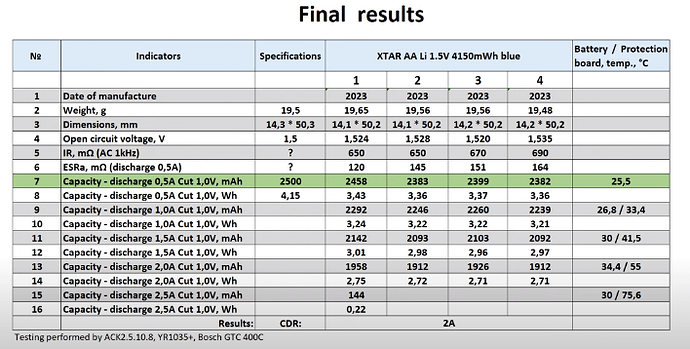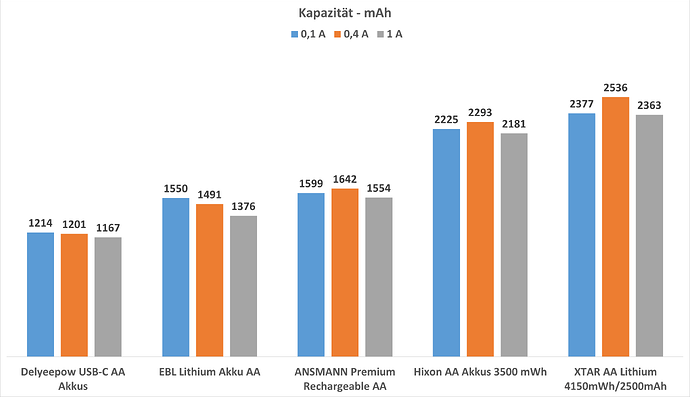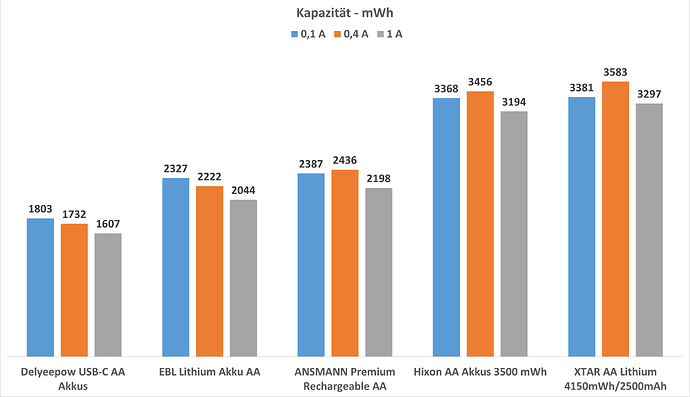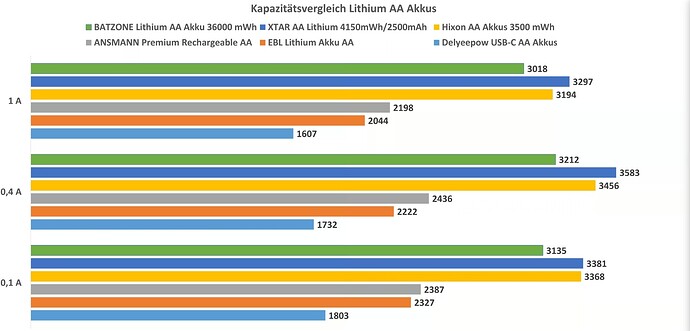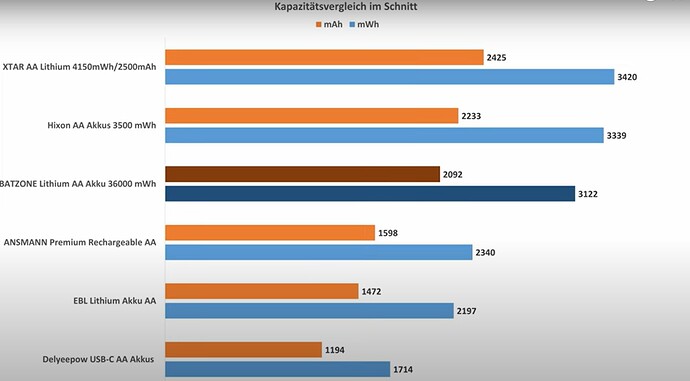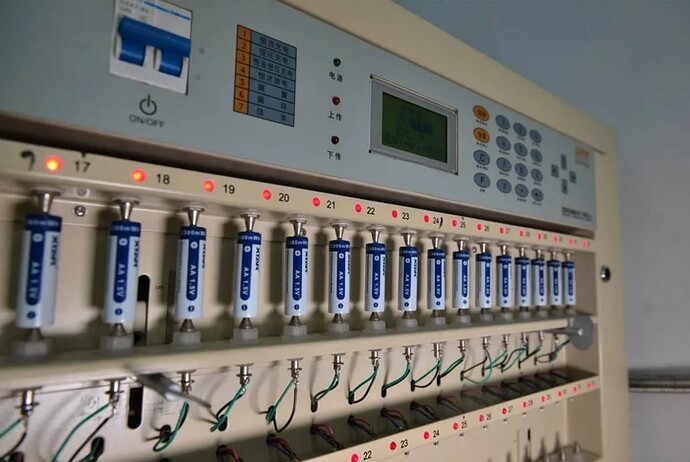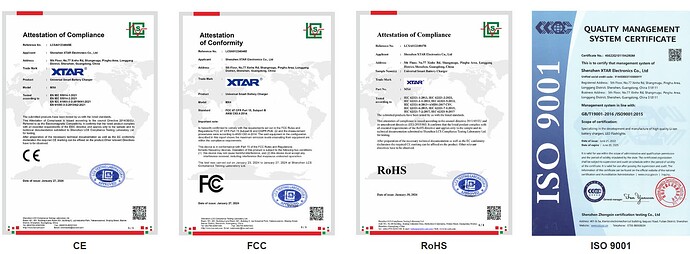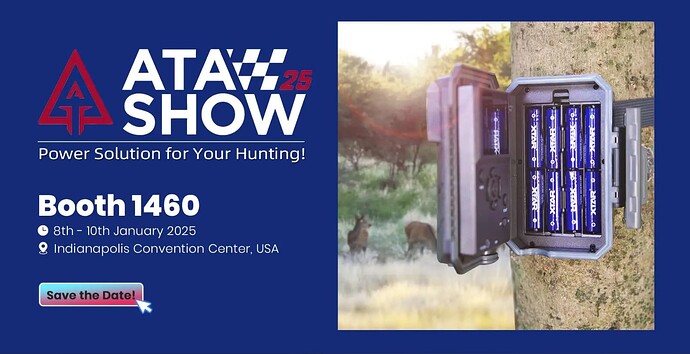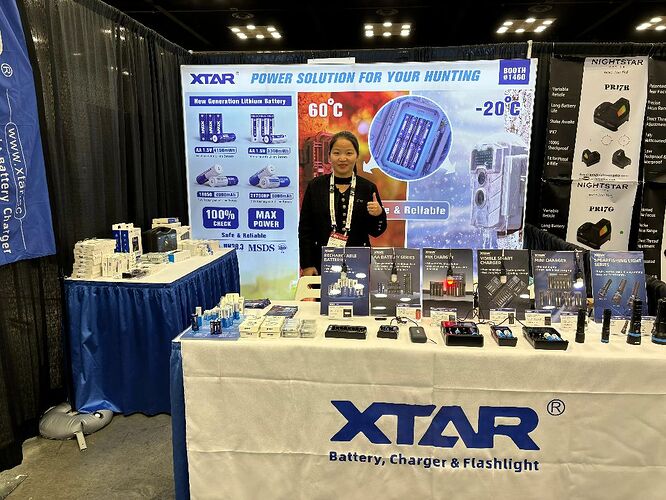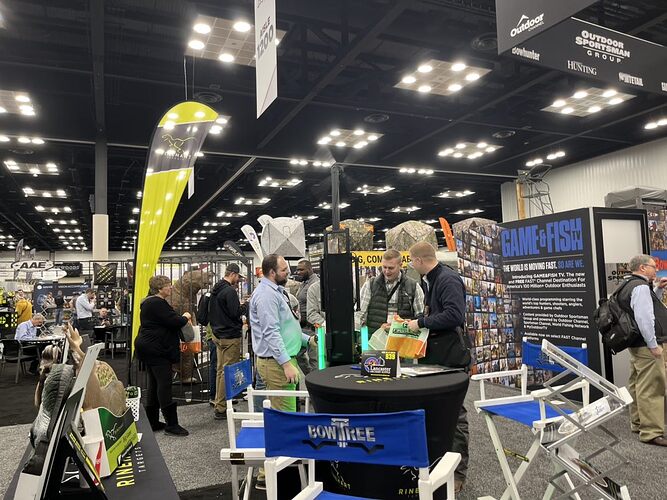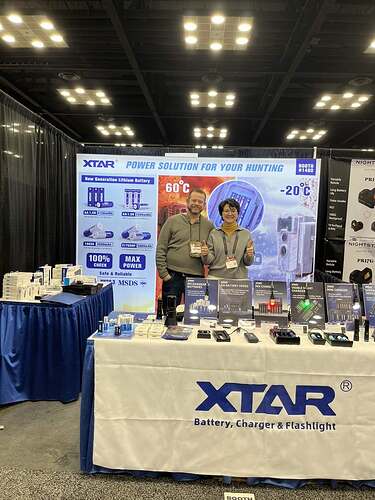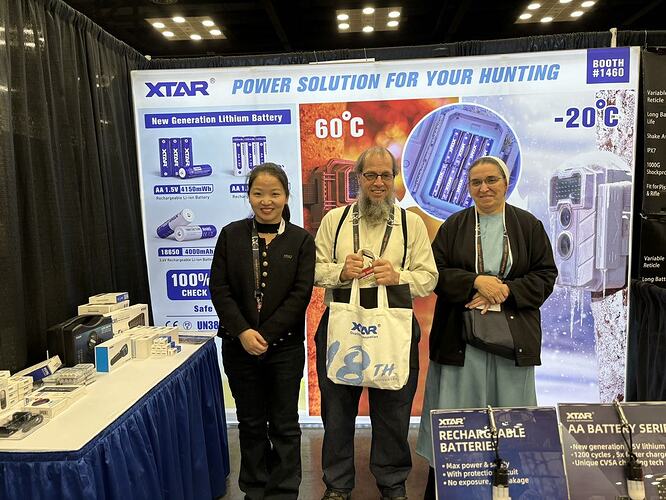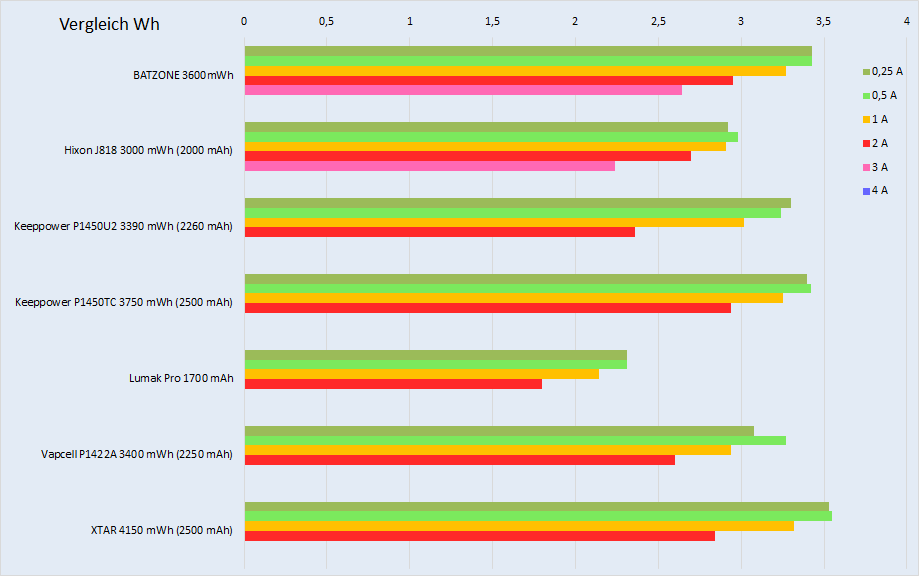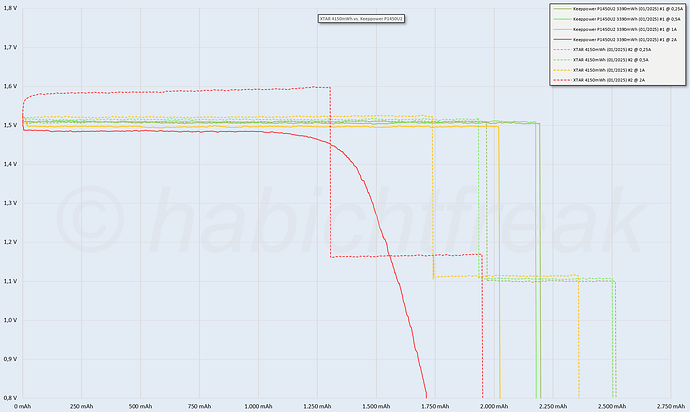You may find there are different methods to label the nominal energy of 1.5V AA/AAA Li-ion batteries in the market. It’s confusing sometime. To help you better understand and choose the right battery. We bought some rechargeable 1.5V AA/AAA Li-ion batteries from different reputable brands and tested them with the professional capacity grading machine in a standard lab environment. Based on these data, we summarized the four most common energy labeling methods. The specific analysis is as follows. And Please check more details on our website:
Great information. Thanks for posting it!!
Mega Review of XTAR 1.5V Li-Ion AA 4150mWh/ 2500mAh Battery & L4 Charger by Dr. Gough Lui
Dr. Gough Lui made two months of 24/7 testing, data analysis spanning gigabytes of log-files and numerous experimental set-ups to learn just how the 1.5V Li-Ion rechargeable cells perform, how they hold up under long-term cycling, how they compare against ordinary Ni-MH cells, how they are built, how they are charged, how efficient are they and what their output voltage is like.
【Updated】 Energy Tests of different AA Batteries by TechTest
There are energy tests of different AA batteries by TechTest. If you are looking for some good AA batteries, check more information here:
【Updated】 About discharge rate for 1.5V Li-ion battery capacity testing
1.5V rechargeable Li-ion battery is an emerging battery, and there is no unified discharge rate. For this kind of battery, the energy of AA size is generally around 2000mWh-4000mWh, and the energy of AAA size is generally below 2000mWh. According to the testing experience of XTAR lab engineers, it is recommended to discharge AA batteries at 0.5A and AAA batteries at 0.2-0.3A for capacity testing.
When Admiral134 tested four XTAR AA 4150mWh (2500mAh) Li-ion batteries, he also found that 0.5A discharging provided the most accurate test results, closely matching the rated 2500mAh, with capacity fluctuation not exceeding 70mAh.
However, for ordinary users who do not have load machines or a capacity grading machines, there is a lack of household devices on the market for testing the capacity of these batteries. To address this issue, XTAR developed the first VX4 charger that can testing the capacity of 1.5V rechargeable lithium-ion battery. It uses a constant discharge current of 0.3A, effectively protecting battery life and providing accurate capacity testing results.
There are more information about how to choose the right discharge rate for different batteries capacity testing online:
Thanks for keeping us updated with new data on these batteries, @xtarflashlight. They look amazing and I’m seriously considering buying a few.
One information I’ve not seen, is about their long-term (months-long) self-discharge rate, specially compared to NiMH. Eg, Eneloops are quoted by Panasonic as retaining 85% of their total capacity after one year in storage.
This is important for those of us that use those batteries either in very low-drain devices (as I do in an external thermometer mounted at a really hard-to-reach place), or for emergency applications (like in a flashlight stored in an emergency pack in a car’s trunk which is only going to be used when the excrement hits the rotating apparatus).
So, here’s my question: if one of your 1.5V batteries gets stored at full charge, how much capacity would remain after an entire year has passed?
I found this back in May. I wanted to link to the original but can’t seem to find it. But it was from Xtar:
When the cells are stored in the fully-charged state, the self-discharge rate typically remains below 5% per month. If the internal cells are stored with the voltage below 3.6V, (no way to check this) the self-discharge rate is less than 3% per month. You can rest assured that these 1.5V Li-ion batteries won’t get over-discharged within one year of your purchase. … Besides, please remember to charge these batteries at every 6 month during long-time storage
The parenthetical (no way to check this) is mine.
Is it still true??? Maybe @xtarflashlight can comment. But the recommendation to recharge every 6 months is a bit telling.
From a practical standpoint, I put 7 of these in different wall clocks back in March (DST change). They all are still working fine.
Interesting. Thanks for the reference, seems I missed it
If the internal cells are stored with the voltage below 3.6V, (no way to check this)
Good thinking, as the internal circuit would always present 1.5V to the “outside world”, and there’s no LEDs in the battery itself to show us the internal battery voltage.
But it could be used to help us with the calculations; storing it at 100% charge as per the recommendations and counting on the maximum 5% self discharge per month, it would reach 50% after 10 months, and then it would slow down to maximum 3% SD per month, which would then take another 13 months to bring it down to 10% charge. So, a minimum of 23 months (almost 2 years) for it to go from 100% to 10%…
And to answer my own question, at the end of 12 months the battery would be at 50%-2*3%= 44%.
I think that is close enough… But as discharge is not likely linear over the first 50% as the voltage goes down, maybe a little more than 44% may be available. But good enough for a ball park estimate!
Comparisons - 1.5V AA Li-ion batteries from XTAR, ANSMANN, Hixon, EBL, Delyeepow
In this video and article below, TechTest test 1.5V AA Li-ion batteries from XTAR, ANSMANN, Hixon, EBL and Delyeepow. To test these AA lithium batteries, he used the SkyRC MC3000 charger/test device. With it, he discharged the batteries with 0.1A, 0.4A and 1A.
There are results as below. More information in the test on Techtest website:
【Updated】 Choose leak-proof batteries for your devices
If you’ve got expensive electronics which use you disposable alkaline batteries, and you didn’t use the devices every day, it probably had this happen, the dead batteries leaking and corroding inside. And your devices may potentially damage. To reduce the chances of this problem happening, it’s suggested to switch to rechargeable lithium batteries, such as xtar 1.5V AA/AAA li-ion battery. It’s leak-proof, and ensuring your equipment’s safety.
Actually most of us have been avoiding Alka-leaks for quite some time, mainly using NiMh Eneloops for the stuff that is 1.2V-tolerant, and Lithium primaries for the stuff that isn’t.
IMHO 1.5V lithium batteries like the ones made by Xtar are nice because they offer a rechargeable option for the second case – but not for emergency stuff like GFTO lights etc because of their larger self-discharge rate (only 50% remaining charge if left unused after an year IIRC).
It would be great to have a LSD option for these use cases… perhaps batteries like the XTAR Lithium 1.5V, but using LSD NiMH cells instead, and with a boost circuit in place of the current buck converter? Just an idea…
【Updated】About XTAR Battery, Charger & Flashlight Tests
We provide high real capacity batteries and perform 100% capacity testing on every cell. This ensures each battery delivers consistent performance, avoiding the risks of under-performing power or device malfunctions. As for chargers, functionality isn’t the only concern. Safety, accuracy in testing, and the health of your batteries are what truly matter… Check more details about xtar battery, charger, and flashlight tests here: https://www.xtar.cc/certificate/
【Updated】 Meet XTAR at the Upcoming ATA Show 2025 in Indianapolis
We are thrilled to join the ATA Show 2025, the premier event for archery and outdoor enthusiasts, taking place January 8–10, 2025 , at the Indianapolis Convention Center, USA . Welcome all friends to visit our Booth #1460.
For hunting professionals and outdoor enthusiasts, the ATA Show is a great opportunity to discover cutting-edge products and connect with reputable brands across the industry. At our booth, you’ll find reliable power solutions tailored for trail cameras, infrared thermal imaging and other optical gear.
Check more details online:
Interesting but what is the maximum continuous discharge rate for these rechargeable 1.5V Lithium Ion batteries? On Amazon I also see C and D size versions listed too but none of the sellers list this performance parameter that I have noted. Energizer Ultimate Lithium non rechargeable AA and AAA batteries are noted for their high current capability, including at lower temperatures, so how do these compare? So far as I am concerned how do they perform in high current demand situations?
I would also note that the title mentions different capacity listing methods but does not directly compare them or provide conversion factors for comparing the different listing methods which is what I expected.
We’re at the ATA Show, Indianapolis Convention Center from January 8–10. Welcome to visit us at booth #1460! ![]()
![]()
【Updated】Energy comparison of 1.5V AA Li-ion batteries from BATZONE, Hixon, Keeppower, Lumak, Vapcell, and XTAR. The writer discharged these batteries with 0.25A, 0.5A, 1A and 2A.
More test details online: Review: XTAR 4150mWh
Thanks @xtarflashlight for the pointer to this new test.
For those that can’t read German like me, here’s a link to a reasonably legible Google-translation: Review: XTAR 4150mWh
Good results in terms of capacity for the XTAR, but like @Mandrake50 once stated, my main doubts regarding those XTAR batteries are their self-discharge rates.
As he pointed out, XTAR claims 5%/month initially, and then 3% after it (internally) hits 3.6V voltage, but AFAIK no one has independently tested/verified that.
I would be very interested in hearing about such a test.
the first generation of Xtar 1.5V Li-Ion, blue-white AA without battery warning (that means without 1.1V phase at the end) were measured with a self discharge of around 35 % within one year at 20°C here in Germany, so 65 % of the capacity was still on board after one year of storage, which was very good at the time of testing … after two years a little less than 40 % of the capacity was left …
but these numbers cannot be generalized … there are other brands, that were nearly or completely empty after one year, with the risk of the internal Li-Ion cell having been damaged !
the current blue Xtar AA “4150 mWh” (energy of the internal 3.6V Li-Ion cell) was taken into that test nearly one year ago, so we could expect results for the self discharge within the next 3 weeks or so … when the results are published, I can post them here …
